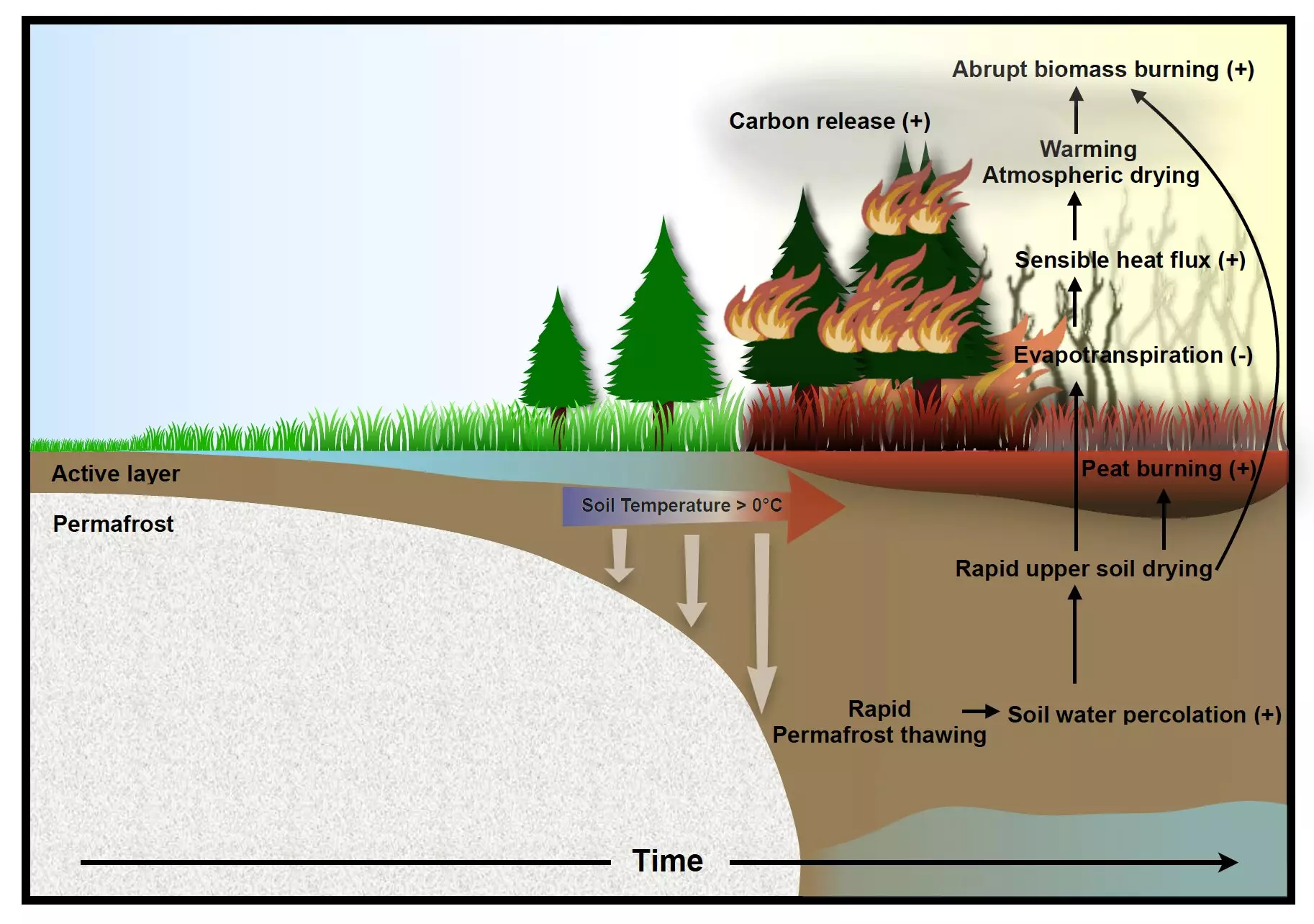The interplay between climate change and wildfires in the Arctic region is an increasingly pressing concern as the planet faces unprecedented warming. A recent study published in the prestigious journal Nature Communications sheds light on this issue, revealing that rising global temperatures are expected to accelerate the thawing of permafrost, which in turn will lead to an alarming increase in the frequency and intensity of wildfires across northern Canada and Siberia. Understanding these processes is crucial for creating accurate models to predict future climate behavior and implementing effective policy responses.
The research emphasizes the importance of robust computer models that take into account not just the direct effects of climate change, but also the intricate interactions between permafrost, soil moisture, and fire dynamics. Traditional climate models have often overlooked these critical relationships, making it vital to refine our understanding of how changed conditions influence fire susceptibility. This study marks a breakthrough by utilizing one of the most advanced earth system models, known as the Community Earth System Model, to simulate how future warming scenarios will affect the permafrost layer and, subsequently, wildfire activity.
Permafrost acts as a crucial buffer in regulating soil water content, a key determinant of wildfire behavior. When permafrost thaws, it can lead to fluctuations in soil moisture levels. In many instances, water that accumulates in thawed permafrost can drain rapidly from the landscape, resulting in dryer soil conditions. This drying phenomenon is anticipated to heighten the risk of wildfires because dry soil is far more susceptible to combustion. The study underscores the urgency of integrating data on hydrological processes into climate models to create a clearer picture of future wildfire events.
To disentangle the effects of human-induced climate change from natural variations, the research team employed an ensemble modeling technique covering the extensive period from 1850 to 2100. This approach revealed alarming projections: by the mid-to-late 21st century, anthropogenic thawing of permafrost is expected to be widespread, fundamentally altering the landscape of the Arctic regions. The implications of these changes are dire, as regions that currently experience minimal fire activity could shift dramatically toward frequent and catastrophic wildfires within a short frame of just a few years.
Interestingly, the study identifies a dual effect of rising CO2 levels on fire intensity. While increased carbon dioxide can lead to enhanced plant growth—often called the CO2 fertilization effect—this denotes that there will be more vegetation available to serve as fuel for wildfires. Hence, rather than being merely a consequence of climate warming, vegetation expansion represents an escalating risk factor for wildfires to proliferate in these stressed environments. The complexity of these interrelations necessitates ongoing research to capture the multifaceted dynamics of permafrost and fire systems.
The ramifications of increased wildfire activity are far-reaching. Not only do wildfires emit significant amounts of carbon dioxide and other pollutants back into the atmosphere, but they also foster a feedback loop that can exacerbate climate change. The need for incorporating fire emissions and atmospheric interactions into future climate models is imperative for developing adequate predictions. Failing to account for these elements may hinder our understanding of potential climate feedback loops and the extent of their impact on future climatic conditions.
The findings from this study serve as an urgent call to action for scientists and policymakers alike. Addressing the intricacies of permafrost dynamics, fire risk, and associated environmental feedbacks requires an ongoing commitment to refining climate models and bolstering observational data collection. As we stand at a pivotal point in the fight against climate change, understanding the connection between permafrost thawing and increased wildfire intensity in the Arctic becomes crucial in shaping future environmental policies and mitigating the adverse effects of climate disruption. Continued research and a collaborative approach will be essential to navigate the challenges ahead, ensuring that we protect vulnerable ecosystems before it is too late.


Leave a Reply